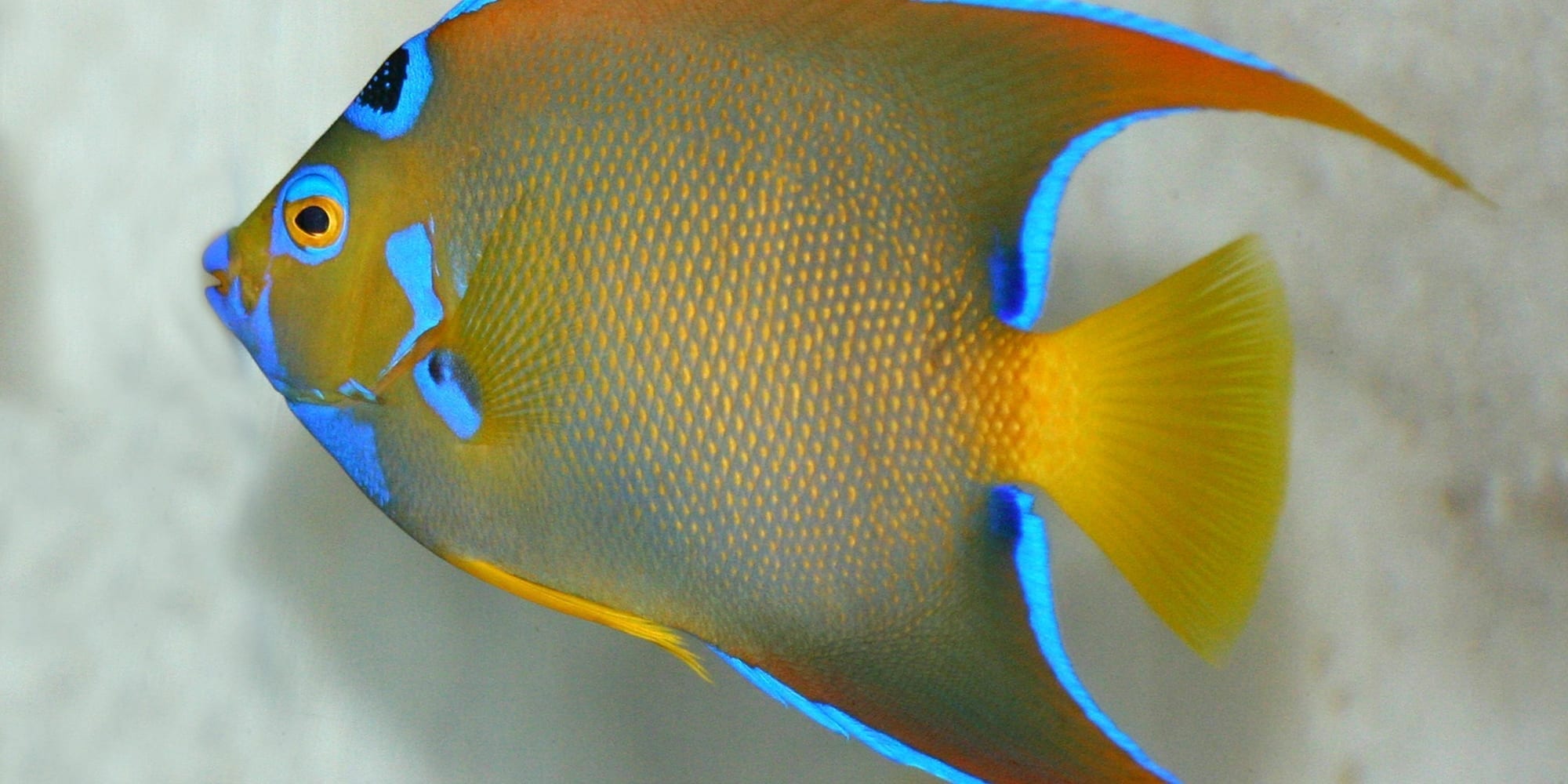Angelfish are among the most beautiful fish found in the coral reefs with brilliant colors and bold patterns. Their iridescent blue bodies and yellow tails stand out but in the colorful world of coral reefs, they actually blend in well and are able to hide from potential predators.
Classification
| CLASS: | Osteichthyes |
| ORDER: | Perciformes |
| FAMILY: | Pomacanthidae |
| GENUS: | Holacanthus |
| SPECIES: | ciliaris |
Habitat & Range
This species of angelfish lives on mature coral reef systems.
Queen angelfish are found in the Western Atlantic Ocean from Bermuda to Brazil and the Caribbean.
Location


Adaptations
- Scales and Gills
- Like all bony fish, queen angelfish have a strong internal skeleton that supports their flexible fins enabling the fish to control movement with precision. They have a gas-filled swim bladder that allows them to adjust their buoyancy. They can pump water over their gills and do not need to move forward to breathe. Their scaly skin is covered with a thin layer of mucus that protects the fish from bacteria and parasites and also makes them slippery, which helps them slide through the water.
- Feel the Vibrations
- Fish have a series of nerves called the lateral line extending the length of the body. These nerves are sensitive to the vibrations caused by the motion of a potential predator or food source swimming nearby.
- Bright Colors
- Angelfish are among the most beautiful fish found in the coral reefs with brilliant colors and bold patterns. Their iridescent blue bodies and yellow tails stand out but in the colorful world of coral reefs, they actually blend in well and are able to hide from potential predators.
Physical Description
- Queen angelfish are up to 18 inches (45 cm) long.
- They weigh up to three and a half pounds (1.6 kg).
- These colorful fish have electric blue bodies, blazing yellow tails with light purple and orange highlights.
- The body is flattened from side to side and they have a small beak-like mouth with comb-like teeth.
- They have a speckled, blue-ringed black spot on their head that resembles a crown.
- They have upper and lower fins that are drawn out into long trailing filaments.
- They may have false eyespots.
Diet
What Does It Eat?
In the wild:
Sponges, algae, tunicates, anemones, coral and loose fragments of organic matter.
At the zoo:
Brine shrimp, mysis shrimp, flake food, chopped fish and vegetables.
What Eats It?
Larger fish prey on queen angelfish.

Social Organization
These shy fish are found alone or in pairs.
Life Cycle
Mating pairs bring their bellies close together and release clouds of sperm and egg. The female can release thousands of eggs each time she mates. The fertilized eggs are transparent and they float until they hatch into larvae in 15-20 hours. The larvae initially lack eyes, fins and digestive organs but within 48 hours they develop the physical characteristics that allow them to swim. The larvae feed on plankton growing rapidly for about a month reaching one half to three quarters of an inch (15-20 mm) in length. They settle on the bottom of the reef where they continue to grow. Juveniles are not brightly colored like the adult angelfish. The young queen angelfish feed by cleaning parasites from larger fish. Average lifespan in the wild is up to 15 years.







